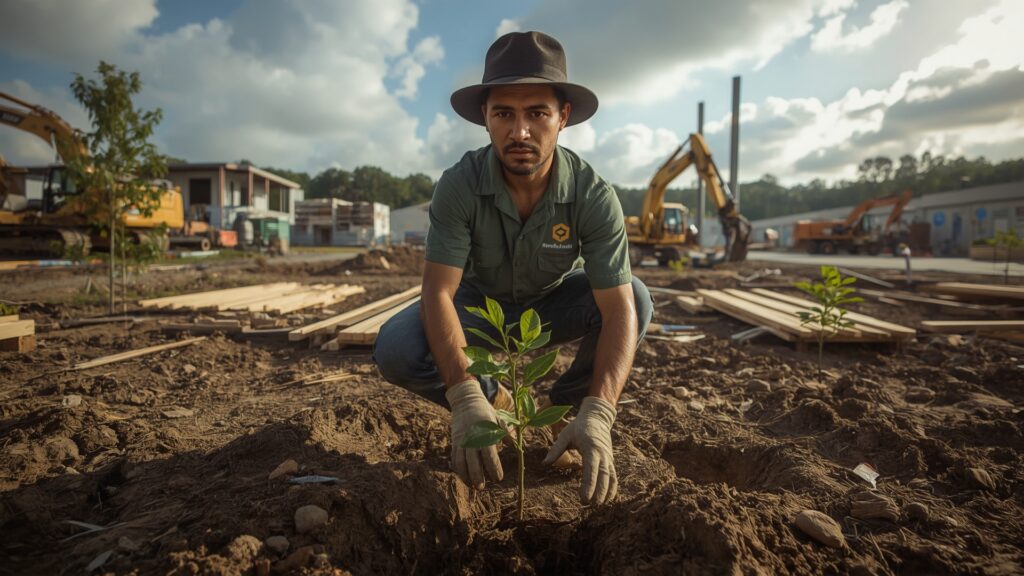Neet to write a landscaper SWMS? Landscaping work might seem low-risk to outsiders, but ask anyone who’s been on site, you’re juggling machinery, sharp tools, heights, traffic, and often unpredictable terrain.
That’s why for many landscaping jobs, especially commercial or council work, a Safe Work Method Statement (SWMS) isn’t just good practice… it’s legally required.
In this guide, we’ll show you how to write a landscaper SWMS that:
- Meets WHS regulations in Australia
- Covers common hazards
- Doesn’t take hours to prepare
A Safe Work Method Statement (SWMS) is more than just paperwork, it’s a key document that keeps your team safe and your business compliant with Australian WHS laws.
Put simply, a SWMS sets out:
- The high-risk tasks being done
- The hazards involved in those tasks
- The steps and safety controls you’ll use to reduce the risk
- Who’s responsible for each part of the work
Now here’s the kicker: most landscaping jobs do include high-risk elements, often without you realising it.
Think about it:
- Using chainsaws or brush cutters
- Working around live traffic or footpaths
- Digging near underground services
- Tree trimming from ladders or elevated platforms
Figuring out whether you need to have a SWMS for landscaping will be easier when you use a template covering the jobs you normally undertake, but the above tasks cover some of the things that are considered high risk tasks.

If any of that sounds familiar, then yes, you’re expected to have a SWMS ready before you start.
How to Write a Landscaper SWMS
Here’s a simple step-by-step guide to building a compliant SWMS:
1. Identify the High-Risk Work Activities
Start by listing all tasks that fall under “high-risk construction work”.
Examples for landscapers:
- Use of chainsaws, brush cutters, or trenchers
- Lifting heavy loads manually
- Working near traffic or public zones
- Tree trimming using ladders or EWP (Elevated Work Platforms) and working at hieghts
2. List Hazards for Each Task
For every job step, identify what could go wrong.
| Task | Hazard |
|---|---|
| Digging trenches | Collapse, hitting underground services |
| Using power tools | Cuts, kickback, noise damage |
| Working roadside | Vehicle collision |
| Using ladders | Falls from height |
3. Add Control Measures
Describe what you’ll do to reduce each risk.
Some typical landscaper SWMS controls:
- Dial Before You Dig check before excavation
- PPE (gloves, hearing protection, high-vis)
- Use of traffic control or signage
- Two-person lifts or lifting aids
4. Document Who’s Responsible
Each section should clearly show:
- Who supervises the task
- Who is doing the task
- When and how often checks are made
5. Get It Signed
Everyone involved in the work must read and sign the SWMS. Keep a copy on-site.
Common Mistakes to Avoid
- Using generic templates with no task-specific hazards
- Forgetting to update your SWMS for different sites
- Failing to review and sign before starting the job
- Skipping jobs just because they “seem low risk”
Fines for SWMS non-compliance can reach thousands, and worse if someone gets hurt.
Why a SWMS Isn’t Just Paperwork, It Could Save Your Business
It’s easy to skip a SWMS and trust your instincts on the job. But when machinery, heights, or public access zones are involved, that shortcut can end in disaster. Here’s why a proper SWMS is non-negotiable, not just for safety, but for survival of your business:
Real Consequences: When Things Went Wrong
- In March 2025, SJK Landscaping Pty Ltd landscaper was fined $175,000 + $6,000 in court costs after a worker cleaning gutters fell through a fragile roof and was left paralysed from the waist down. WorkSafe WA called it a “tragic reminder” that proper planning, equipment, and documented procedures are essential.
- In New South Wales, A1 Arbor Tree Services Pty Ltd received the largest WHS fine in state history, over $2 million, plus an extra six-figure penalty for the director, after a trainee was fatally injured by a woodchipper.
It’s Not Just About You, It Affects Everyone
These aren’t isolated events. Courts across Australia are increasingly punishing businesses that operate without documented safety plans. Even in seemingly routine tasks like gutter-cleaning or tree maintenance, if something goes wrong, the legal and financial fallout can be catastrophic.
The Take-Home?
- A SWMS is more than a tick box, it’s your proof that you’ve considered the hazards and how to control them.
- If you’re skipping this step, you’re not just risking fines, you’re exposing your crew (and your livelihood) to real harm.
A Smarter Way to Handle It
At Safer Outcomes, we know most landscapers don’t have time to sit down and build a SWMS from scratch every week.
That’s why we created a done-for-you Landscaper SWMS Pack, which includes:
- Pre-filled task-specific landscaper SWMS
- Editable Word docs with your business logo
- Instant download so you’re ready for your next job
Whether you’re quoting a council gig or just need peace of mind on site, we’ve got your paperwork covered.
👉 Check out the Landscapers SWMS pack here.


